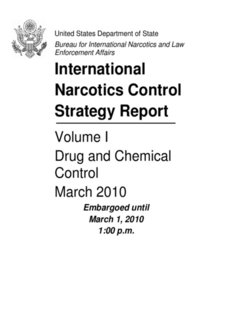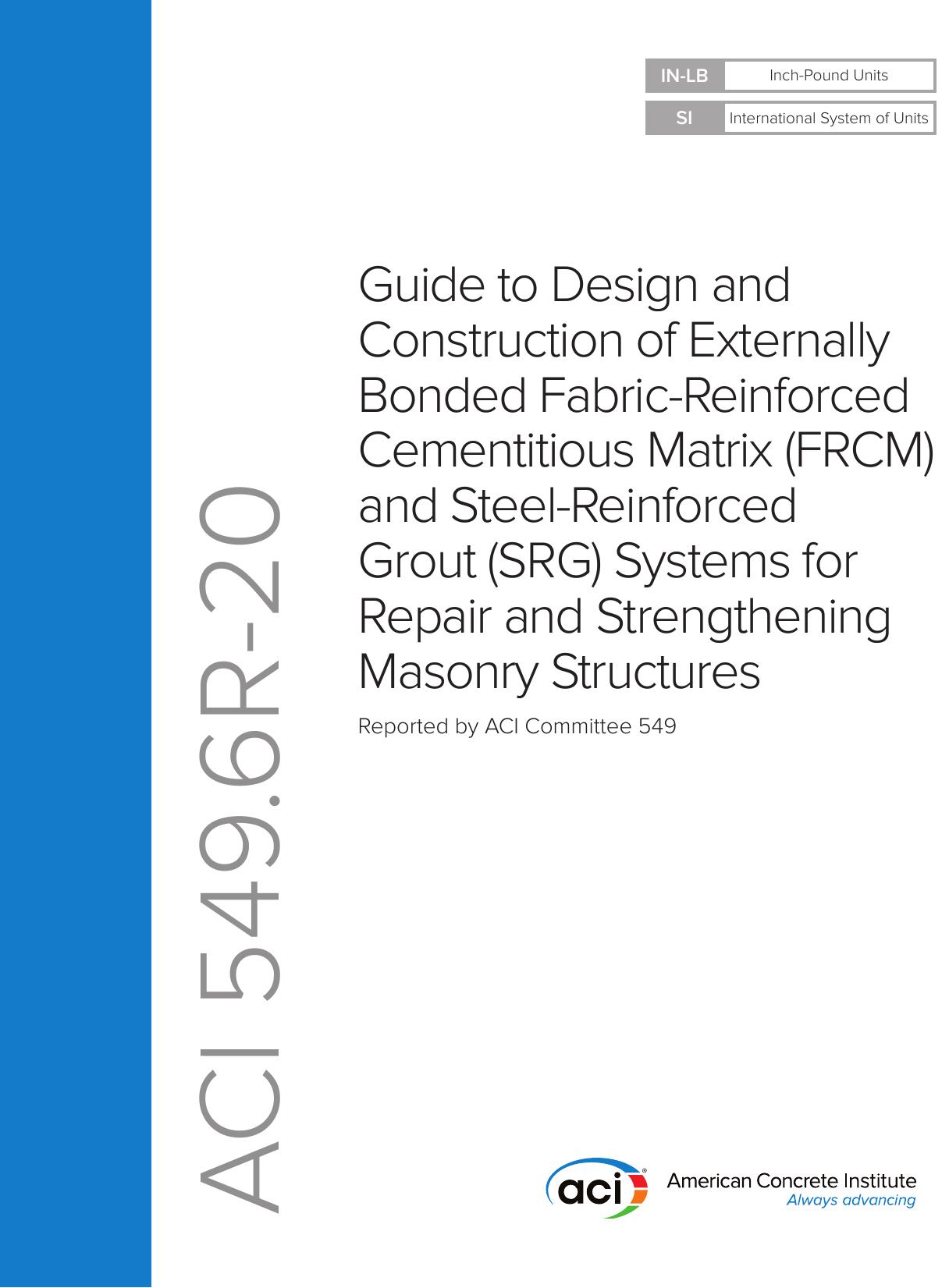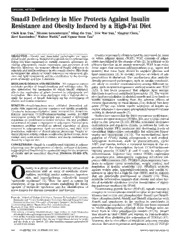
The Art of Functional Programming PDF
Preview The Art of Functional Programming
The Art of Functional Programming with examples in OCaml, Haskell, and Java Minh Quang Tran, PhD The Art of Functional Programming with examples in OCaml, Haskell, and Java Minh Quang Tran, PhD The Art of Functional Programming Copyright © 2022 Minh Quang Tran. All rights reserved. About the author: Minh Quang Tran has more than 20 years of experience studying so�ware development and working in the so�ware industry. He has worked in various tech startups and big so�ware companies in Europe. He received his M.Sc. in Computer Science from McMaster University, Canada, and his Ph.D. in Computer Science from Technical University of Berlin, Germany. His interest lies in understanding and mastering the fundamentals and principles that cut across programming languages, frameworks, and tools. Contents Contents 1 Introduction 3 1.1 AboutThisBook . . . . . . . . . . . . . . . . . . . . . . . . . . . . . . . . . . . . . . . . 3 1.2 ABiteofFunctionalProgramming . . . . . . . . . . . . . . . . . . . . . . . . . . . . . . . 5 1.3 WhyFunctionalProgrammingMatters? . . . . . . . . . . . . . . . . . . . . . . . . . . . . 11 1.4 RequiredTools . . . . . . . . . . . . . . . . . . . . . . . . . . . . . . . . . . . . . . . . . 13 1.5 QuizonImperativevs.FunctionalProgramming . . . . . . . . . . . . . . . . . . . . . . . 16 1.6 AnswerstoQuizonImperativevs.FunctionalProgramming . . . . . . . . . . . . . . . . . 17 2 Expressions–BuildingBlocksofFunctionalPrograms 18 2.1 FunctionalProgrammingisAllAboutExpressions . . . . . . . . . . . . . . . . . . . . . . 18 2.2 SyntaxofExpressions . . . . . . . . . . . . . . . . . . . . . . . . . . . . . . . . . . . . . 23 2.3 ParsingExpressions . . . . . . . . . . . . . . . . . . . . . . . . . . . . . . . . . . . . . . 29 2.4 TypesofExpressions . . . . . . . . . . . . . . . . . . . . . . . . . . . . . . . . . . . . . . 34 2.5 ValuesofExpressions . . . . . . . . . . . . . . . . . . . . . . . . . . . . . . . . . . . . . . 40 2.6 AssignNamestoExpressions . . . . . . . . . . . . . . . . . . . . . . . . . . . . . . . . . 44 2.7 ProgrammingChallenges . . . . . . . . . . . . . . . . . . . . . . . . . . . . . . . . . . . 50 2.8 SolutionstoProgrammingChallenges . . . . . . . . . . . . . . . . . . . . . . . . . . . . 51 2.9 QuizonExpressions . . . . . . . . . . . . . . . . . . . . . . . . . . . . . . . . . . . . . . 51 2.10 AnswerstoQuizonExpressions . . . . . . . . . . . . . . . . . . . . . . . . . . . . . . . . 54 3 BuildingAbstractionswithFunctions 56 3.1 LambdaCalculus:FoundationofFunctionalProgramming . . . . . . . . . . . . . . . . . 56 3.2 FunctionAbstractionandFunctionApplication . . . . . . . . . . . . . . . . . . . . . . . . 60 3.3 UseCurryingforFunctionChaining . . . . . . . . . . . . . . . . . . . . . . . . . . . . . . 68 3.4 RecursiveFunctions . . . . . . . . . . . . . . . . . . . . . . . . . . . . . . . . . . . . . . 71 3.5 GeneralComputationMethodsasHigher-OrderFunctions . . . . . . . . . . . . . . . . . . 76 3.6 ProgrammingChallenges . . . . . . . . . . . . . . . . . . . . . . . . . . . . . . . . . . . 83 3.7 SolutionstoProgrammingChallenges . . . . . . . . . . . . . . . . . . . . . . . . . . . . 85 3.8 QuizonFunctions . . . . . . . . . . . . . . . . . . . . . . . . . . . . . . . . . . . . . . . 87 3.9 AnswerstoQuizonFunctions . . . . . . . . . . . . . . . . . . . . . . . . . . . . . . . . . 91 4 CompoundDataTypes 93 4.1 GroupDataObjectsintoTuples . . . . . . . . . . . . . . . . . . . . . . . . . . . . . . . . 93 4.2 Destructtupleswithpatternmatching . . . . . . . . . . . . . . . . . . . . . . . . . . . . 95 TheArtofFunctionalProgramming 1 Contents 4.3 StoreSequencesofDatawithLists . . . . . . . . . . . . . . . . . . . . . . . . . . . . . . 97 4.4 DeclareUser-definedTypeswithAlgebraicDataTypes . . . . . . . . . . . . . . . . . . . . 103 4.5 ProgrammingChallenges . . . . . . . . . . . . . . . . . . . . . . . . . . . . . . . . . . . 112 4.6 SolutionstoProgrammingChallenges . . . . . . . . . . . . . . . . . . . . . . . . . . . . 115 4.7 QuizonCompoundDatatypes . . . . . . . . . . . . . . . . . . . . . . . . . . . . . . . . . 116 4.8 AnswerstoQuizonCompoundDatatypes . . . . . . . . . . . . . . . . . . . . . . . . . . 121 5 CommonComputationPatterns 123 5.1 ThemapFunction . . . . . . . . . . . . . . . . . . . . . . . . . . . . . . . . . . . . . . . 123 5.2 Thefilterfunction . . . . . . . . . . . . . . . . . . . . . . . . . . . . . . . . . . . . . . . 134 5.3 Thefoldfunction . . . . . . . . . . . . . . . . . . . . . . . . . . . . . . . . . . . . . . . . 138 5.4 ThezipFunction . . . . . . . . . . . . . . . . . . . . . . . . . . . . . . . . . . . . . . . . 146 5.5 ProgrammingChallenges . . . . . . . . . . . . . . . . . . . . . . . . . . . . . . . . . . . 149 5.6 SolutionstoProgrammingChallenges . . . . . . . . . . . . . . . . . . . . . . . . . . . . 151 5.7 QuizonCommonComputationPatterns . . . . . . . . . . . . . . . . . . . . . . . . . . . 152 5.8 AnswerstoQuizonCommonComputationPatterns . . . . . . . . . . . . . . . . . . . . . 156 6 DataflowProgrammingwithFunctions 159 6.1 List-basedDataflowProgramming . . . . . . . . . . . . . . . . . . . . . . . . . . . . . . . 159 6.2 Stream-basedDataflowProgramming . . . . . . . . . . . . . . . . . . . . . . . . . . . . 168 6.3 ProgrammingChallenges . . . . . . . . . . . . . . . . . . . . . . . . . . . . . . . . . . . 179 6.4 SolutionstoProgrammingChallenges . . . . . . . . . . . . . . . . . . . . . . . . . . . . 181 6.5 QuizonDataflowProgrammingwithFunctions . . . . . . . . . . . . . . . . . . . . . . . . 182 6.6 AnswerstoQuizonDataflowProgrammingwithFunctions . . . . . . . . . . . . . . . . . 185 7 ApplyingFunctionalProgramminginPractice 187 7.1 HandleCollectionsinDataProcessingApplications . . . . . . . . . . . . . . . . . . . . . 187 7.2 HandleJSON . . . . . . . . . . . . . . . . . . . . . . . . . . . . . . . . . . . . . . . . . . 193 8 Conclusion 201 8.1 WrapUp . . . . . . . . . . . . . . . . . . . . . . . . . . . . . . . . . . . . . . . . . . . . . 201 8.2 WheretoGofromHere? . . . . . . . . . . . . . . . . . . . . . . . . . . . . . . . . . . . . 202 TheArtofFunctionalProgramming 2 1 INTRODUCTION 1 Introduction 1.1 AboutThisBook 1.1.1 Bookdescription WelcometoTheArtofFunctionalProgrammingbook! Functionalprogrammingisapowerfulandelegantprogrammingparadigm.Initiallyonlypopularamong universityresearchers,it’sgainedmuchtractioninthesoftwareindustryinthelastfewyears. Frombig companies to start-ups, engineers and managers have realized that functional programming excels at abstractionandcomposition.Functionalprogrammingallowsforhighlyconcisesolutionswithincreased safety.Thishasledtorisingdemandforsoftwareengineerswithfunctionalprogrammingskills.Thisbook willhelpyoumoveyourprogrammingskillstothenextlevel. Thisbookisgroundedonmybeliefsaboutsoftwaredevelopmentresultingfrommyreflectionaftermany yearsofstudyingandworkinginthesoftwareindustry. First,therearetonsofprogramminglanguages, frameworks,andtoolsoutthere–withmanymorecominginthefuture. Theonlywaytostayaheadof thegameinthisvastandquicklychangingsoftwareindustryistomasterthefundamentalsandprinciples thatcutacrossprogramminglanguages,frameworks,andtools. Inthecaseoffunctionalprogramming, learningtoadoptthefunctionalwayofsolvingproblemsismuchmoreproductivethanmemorizinghow towritefunctionalcodeinaparticularlanguage.Thisbookteachesthisfunctionalwayofthinking.We’ll also learn many fundamental techniques from programming languages, such as parsing, compilation, andtypechecking. Second,Ibelievethatatechniqueortoolisnotveryusefulifitdoesnothelpussolvereal-worldprob- lemsandmakeourliveseasier. Inthisbook,we’llonlylookatexamplesandexercisesthataretypically encounteredinaprogrammer’sday-to-dayjob. Furthermore,anentirechapterisdedicatedtoapplying whatwe’velearnedtoreal-worldscenarios. Inparticular,we’llusefunctionalprogrammingtoprocess collectionsofdataforane-commerceapplicationandhandletheJSONdatatype. Iliketothinkofthedualityofstrivingtograspthefundamentalprinciplesofthefunctionalparadigmwhile applyingittoreal-worldproblemspragmaticallyastheyinandyangofthejourneytomasterfunctional programming. TheArtofFunctionalProgramming 3 1 INTRODUCTION Figure1:Yinandyangasasymbolofduality Hereisthesummaryofthechaptersinthisbook: • In Chapter 1: Introduction, we’ll start the book with an introduction to functional programming. In particular, we’ll see how it can overcome some of the inherent weaknesses of the imperative programmingparadigm. We’llalsodiscusswhyfunctionalprogrammingmatterstoanysoftware engineer. • InChapter2: Expressions–TheBuildingBlocksofFunctionalPrograms,weexamineexpressions andhowtobuildcomplexexpressionsfromsimplerones. Threeaspectsofexpressions–syntax, types,andsemantics—willbecovered. Alongtheway,we’llgainamuchdeeperunderstandingof howprogramminglanguageswork,includingparsing,typechecking,interpretation,andcompila- tion. • InChapter3: BuildingAbstractionswithFunctions,we’llgettoknowlambdacalculus–amathe- maticalmodelservingasthefoundationofallfunctionalprogramminglanguages.We’lllearnhow tocapturecomputationpatternsasfunctions.Finally,we’lldiscussvarioustechniquesforworking withfunctionssuchascurrying,recursion,andhigher-orderfunctions. • InChapter4: ComplexDataTypes,we’llfocusonthecomplexdatatypestypicallyfoundinfunc- tionalprogramminglanguages,suchastuplesandlists.Furthermore,we’llusealgebraicdatatypes torepresenthierarchicaldata,andpatternmatchingtoextractdatafromcomplexdatatypes. • InChapter5: CommonComputationPatterns,we’lldiveintosomeofthemostcommoncomputa- tionpatterns,suchasmap,filter,fold,andzip.Thesefunctionscapturehighlygeneralcomputation patternsonlistsandotherdatastructuresthatcanbereusedtoformulatemanyotherfunctions. TheArtofFunctionalProgramming 4 1 INTRODUCTION • InChapter6: DataflowProgrammingwithFunctions,we’llgooverdataflowprogramming,apro- grammingparadigmthatemphasizescomposingprogramsfromexistingcomponents. We’lllearn howfunctionalprogrammingallowsustododataflowprogrammingelegantlyandreapallitsben- efits. • InChapter7:ApplyingFunctionalProgrammingtoVariousDomains,we’llapplywhatwe’velearned toprocesscollectionsofdatacommonlyfoundinmobileandwebapplications,aswellasbackend services.Furthermore,we’llusefunctionalprogrammingtorepresentandhandleJSON. We’llmainlyuseOCamlandoccasionallyHaskeltodemonstratethekeyconceptsandtechniquesoffunc- tionalprogrammingthroughoutthebook.Tocontrastfunctionalprogrammingconceptswithimperative ones,we’lluseJava.Yet,itisessentialtorepeatthatmostfunctionalprogrammingtechniquesintroduced inthisbookareuniversal.Thatmeanswecanapplythemtoalmostanyprogramminglanguagethatsup- portsthefunctionalprogrammingstyle. ThisincludesbutisnotlimitedtoSwift,Kotlin,JavaScript,Go, Python,andevenJava(usingtheJavaStreamAPI). 1.1.2 Intendedaudience Thisisabeginnerandintermediatebookaimedatsoftwareengineers, engineeringmanagers, orcom- putersciencestudentsinterestedinunderstandingtheessenceoffunctionalprogramming. Itisalsoan excellentfitforindividualswhoarecurrentlypreparingforcodinginterviewsandwanttoimprovetheir problem-solvingskills. 1.2 ABiteofFunctionalProgramming Functionalprogrammingisaprogrammingparadigm—astyleorawayofthinkingwhenwritingsoft- wareprograms. Therearemanyprogrammingparadigmsavailable,someofwhicharepresentedinthe followingdiagram. TheArtofFunctionalProgramming 5 1 INTRODUCTION Figure2:Programmingparadigms Theimperativeprogrammingparadigmistheoldest,andstillthemostpopular,paradigmusedtoday. Astheterm“imperative”indicates, thisparadigmmodelsaprogramasasequenceofcommandsthat changeaprogram’sstate–“firstdothis,thendothat.”Evenifwefollowtheobject-orientedprogramming paradigmbyencapsulatinglogicintoclasses,we’lllikelyimplementtheclassmethodsintheimperative style. Why has imperative programming dominated the programming world? In his Turing Award lecture ti- tled CanProgrammingBeLiberatedfromthevonNeumannStyle? AFunctionalStyleandItsAlgebraof Programs,thecomputerscientistJohnBackusgivesaninsightfulanswer. Accordingtohisobservation, thereasoncanbetracedbacktotheVonNeumannarchitecture.NamedafterthemathematicianJohn vonNeumann,whotookinspirationfromtheTuringmachine,itisacomputerarchitectureusedbymost computersproducedtoday. Inthefollowing,we’llreviewthevonNeumannarchitectureanddiscussseveralproblemsoftheimpera- tiveprogrammingparadigmduetoitstightcouplingwiththisarchitecture. Thenwe’llseehowthefunc- tionalprogrammingparadigmcanelegantlyovercomethoseproblems. 1.2.1 VonNeumannarchitecture In its simplest form, a Von Neumann computer consists of a Central Processing Unit (CPU), a memory, andabusthatconnectsthem. TheCPUactsasthebrainofthecomputerwiththeabilitytoexecutea predefinedsetofmachinecodeinstructions. Theseinstructionsareinbinaryform,consistingof0sand 1s,anddoaveryprimitivething,suchasaddingtwonumbersortestingwhetheranumberequalszero TheArtofFunctionalProgramming 6 1 INTRODUCTION ornot.TheCPUhasahandfulofregisterstostoredataneededwhenexecutinganinstruction. Thememoryistheplacewhereaprogramanditsdataarestored. Aprogramisasequenceofmachine codeinstructions. TheCPUandthememoryareconnectedviaabus. Duetothis,asubsetofmachine codeinstructionsisdedicatedtoloadingdatafrommemoryontotheregistersorstoringthedatafrom theregisterontothememory. ThefollowingdiagramillustratestheVonNeumannarchitecture. Figure3:ThevonNeumannarchitecture So,howdoesaprogramrun? It’squitesimple. TheCPUrunstheprogramfollowingamechanicalfetch- executecycle. First, itfetchesthefirstinstructionintheprogramandexecutesit. Thenitfetchesthe nextinstructionandexecutesit,andthiscyclecontinueson.Someinstructionsaffecttheorderofexecu- tion. Forinstance,ajumpinstructiondirectstheCPUtojumpbacktoapreviouspointoftheinstruction sequence. A branch instruction tells the CPU to branch to a particular instruction if some condition is TheArtofFunctionalProgramming 7
The list of books you might like

The Mountain Is You

Haunting Adeline

The Strength In Our Scars

Mind Management, Not Time Management

Satellite technology: principles and applications

Bureau for International Narcotics and Law Enforcement Affairs

Charaksanghitar Darshanic Vabna-samikha

Mass Appeal Magazine 38

RIHS Watchtower 2006

Maryville College Catalog 2006-2008

California Garden, Vol. 97, No.3, May-June 2006

Knowledge and employability : social studies grades 8 and 9

Quasar Lensing Statistics and Omega_Lambda: What Went Wrong?

Bedienungshandbuch

Troubled Blood

The Auburn Circle Spring 2006

The Pegasus 2006

C. J. Cherryh - Union Alliance - Finity' s End






